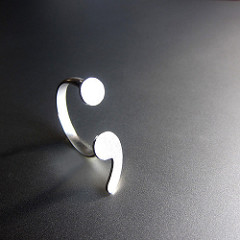Having covered the colon the past two weeks, we can now progress to its poorly understood cousin*: the semicolon. And continuing a familial theme, does it seem that if a period and comma had a kid, it would look like a semicolon? In truth, that makes sense because a semicolon performs as a hybrid of the two.
More than a comma
Sometimes we write sentences that can tax the reader because they contain elements and sub-elements, like this: Each floor of the firm’s offices has a distinct color scheme: navy, medium gray, and pearl, khaki, black, and brick, and charcoal, black, and aqua.
Clear? Congrats if you grasped all that in one read, but note how the semicolon can come to the rescue: … navy, medium gray, and pearl; khaki, black, and brick; and charcoal, black, and aqua. By using “more than a comma” at the end of each floor’s color scheme, we are able to spoon-feed our reader.
A similar illustration of the value of semicolons is when we cite strings of names and positions: Our new officers are Ava Arnold, president; Brett Barnham, vice president; Craig Conners, treasurer; Diane Dixon, associate treasurer; and Evie Earle, secretary. Employing semicolons, instead of just relying on a blur of commas, enables us to write more clearly.
Less than a period
Sometimes the close relationship between two sentences presents a different opportunity to trot out the semicolon: This year’s conference will be in Atlanta; next year’s is in Denver. Another example: More than 600 runners turned out for the event; no injuries were reported.
Added clarifications
1. * Calling the colon and semicolon “cousins” was tongue-in-cheek; their functions are unrelated.
2. Unlike periods and commas, colons and semicolons always go outside quotation marks.
3. You might call the “more-than-a-comma” use of the semicolon functional. It helps the reader decipher an otherwise cumbersome sentence. The “less-than-a-period” use might be called stylistic because it is simply a choice. Generally, we could instead opt for a period or a conjunction like “and” or “but.”
4. When we use a semicolon stylistically, we usually do not use a conjunction; the semicolon can do the whole job.
You can go to http://www.normfriedman.com/index.shtml to learn more about my workshops on writing in the workplace, individual coaching, editing, and handbook – 100+ Instant Writing Tips. Thank you.

